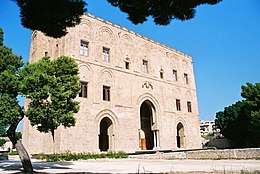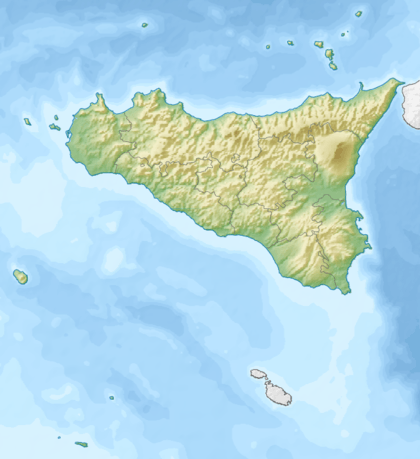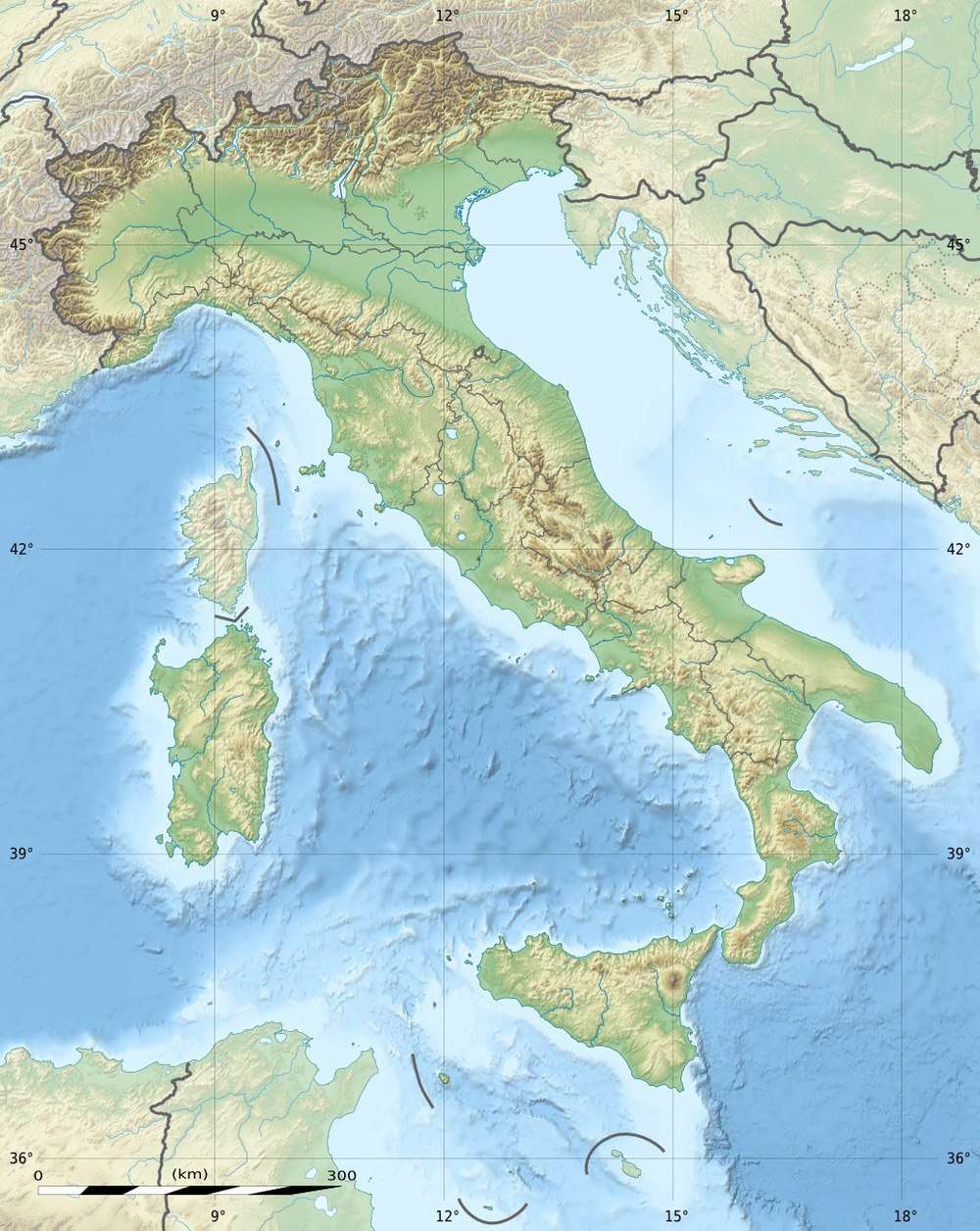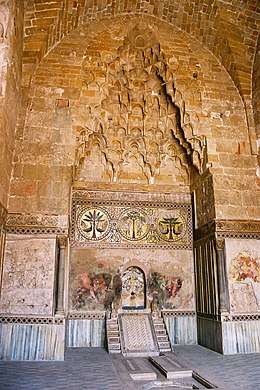Zisa, Palermo
The Zisa is a castle in the western part of Palermo in Sicily, southern Italy. It is included in the UNESCO Arab-Norman Palermo and the Cathedral Churches of Cefalù and Monreale World Heritage Site.[1]
| UNESCO World Heritage Site | |
|---|---|
 The Zisa of Palermo. | |
| Location | Palermo, Sicily, Italy |
| Part of | Arab-Norman Palermo and the Cathedral Churches of Cefalú and Monreale |
| Reference | 1487-006 |
| Inscription | 2015 (39th session) |
| Area | 0.8 ha (2.0 acres) |
| Coordinates | 38°07′00″N 13°20′29″E |
 Location of Zisa, Palermo in Sicily  Zisa, Palermo (Italy) | |
The construction was begun in the 12th century by Arabian craftsmen for king William I of Sicily , and completed by his son William II. [2] The edifice had been conceived as summer residence for the Norman kings, as a part of the large hunting resort known as Genoardo (Arabic: Jannat al-arḍ, literally "Earthly Paradise")[3] that included also the Cuba Sottana, the Cuba Soprana and the Uscibene palace.
The Zisa is clearly inspired by Moorish architecture. The name Zisa itself derives from the Arab term al-Azīz, meaning "dear" or "splendid". [4]The same word, in Naskh script, is impressed in the entrance, according to the usual habit for the main Islamic edifices of the time.

In the 14th century merlons were added, by partly destroying the Arab inscription (in Kufic characters) which embellished the upper part of the edifice.[5] More substantial modifications were introduced in the 17th century, when the Zisa, reduced to very poor conditions, was purchased by Giovanni di Sandoval e Platamone, Marquis of S. Giovanni la Mendola, Prince of Castelreale, Lord of the Mezzagrana and the Zisa[6]. The latter's marble coat of arms with two lions can be seen over the entrance fornix. Several rooms of the interior were modified and others added on the ceiling, a great stair was built, as well as new external windows.
From 1808 to the 1950s the building was used a residence by the princes Notarbartolo di Sciara[7]. Acquired by the Region of Sicilia it was restored in the 90s (the Northern part had crumbled down in 1971 and has been rebuilt along the original lines).[8] The Zisa today is opened to tourists. Some rooms house Islamic art pieces, tools and artifacts from the Mediterranean area. The most notable room is the central hall, with a mosaic decoration; once it had a fountain too, from which the water flowed outside. On 3 July 2015 it became UNESCO World Heritage Site.
See Also
Giuseppe Bellafiore: La Zisa di Palermo, Flaccovio, Palermo, 1994.
Donald Matthew: The Norman Kingdom of Sicily, Cambridge University Press, 1992.
John Julius Norwich: The Normans in Sicily: The Normans in the South 1016-1130 and the Kingdom in the Sun 1130-1194, Penguin, 1992.
Notes
Sources Used
| Wikimedia Commons has media related to Zisa (Palermo). |
- "Zisa Palace, Palermo - UNESCO".
- Gaetano Zingone (Prof.). "Restoration of the Zisa Palace, Palermo". Structural Engineering International Volume 3, 1993 - Issue 1. Cite journal requires
|journal=(help) - A Companion to Medieval Palermo: The History of a Mediterranean City. Leiden; Boston : Brill. 2013.
- Christopher Gravett (1 July 2007). History of Castles, New and Revised. Lyons Press. ISBN 9781461749295.
- "The Zisa of Palermo - Qantara". Retrieved 21 March 2020.
- Filippo Puglia (24 May 2018). Castello della Zisa (in Italian). Youcanprint.
- "Zisa Early medieval hunting castle in the Arab Norman style". Retrieved 21 March 2020.
- Carlo Trabia (2005). "The Zisa Garden". Best of Sicily Magazine. Retrieved 21 March 2020.